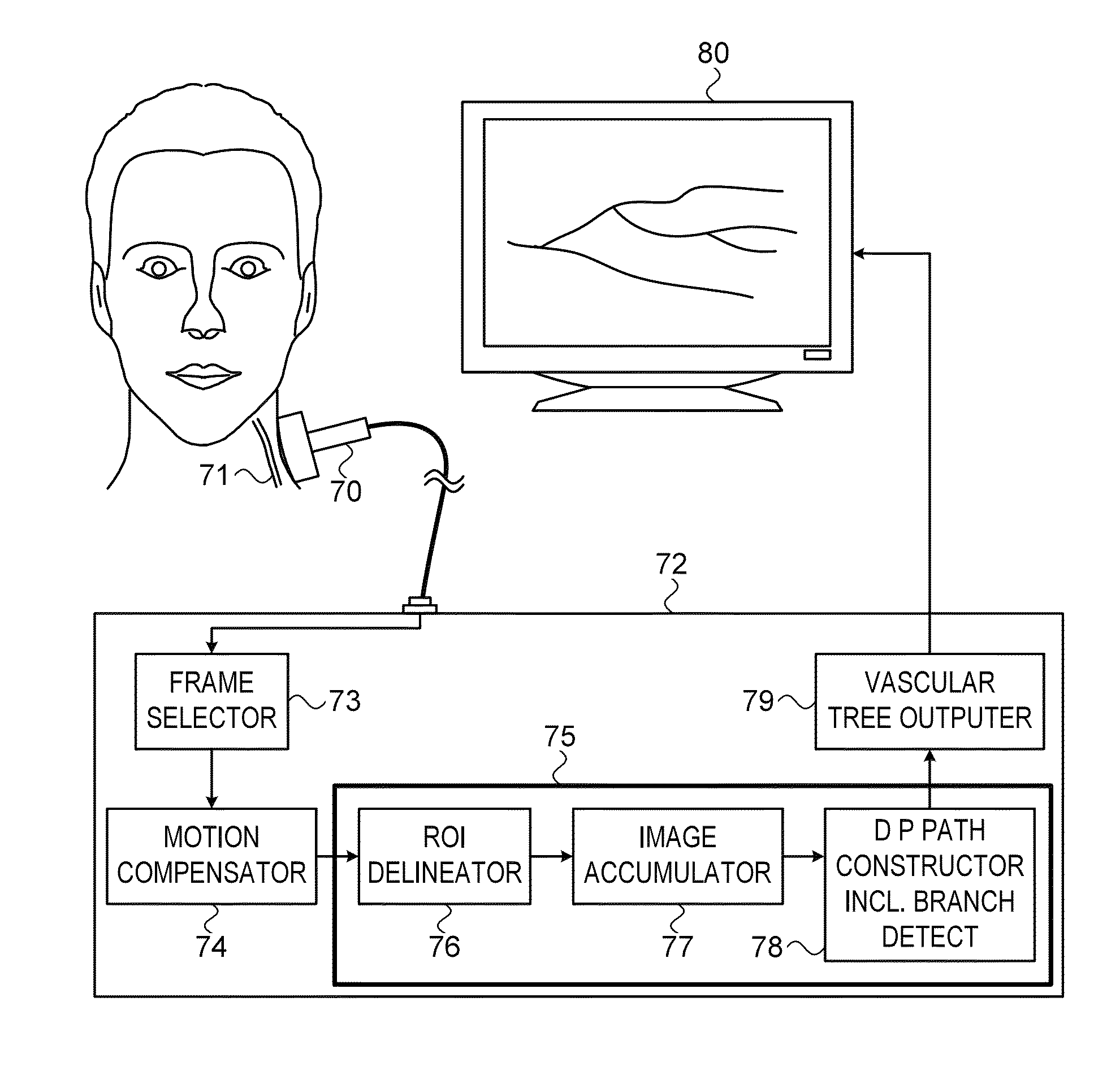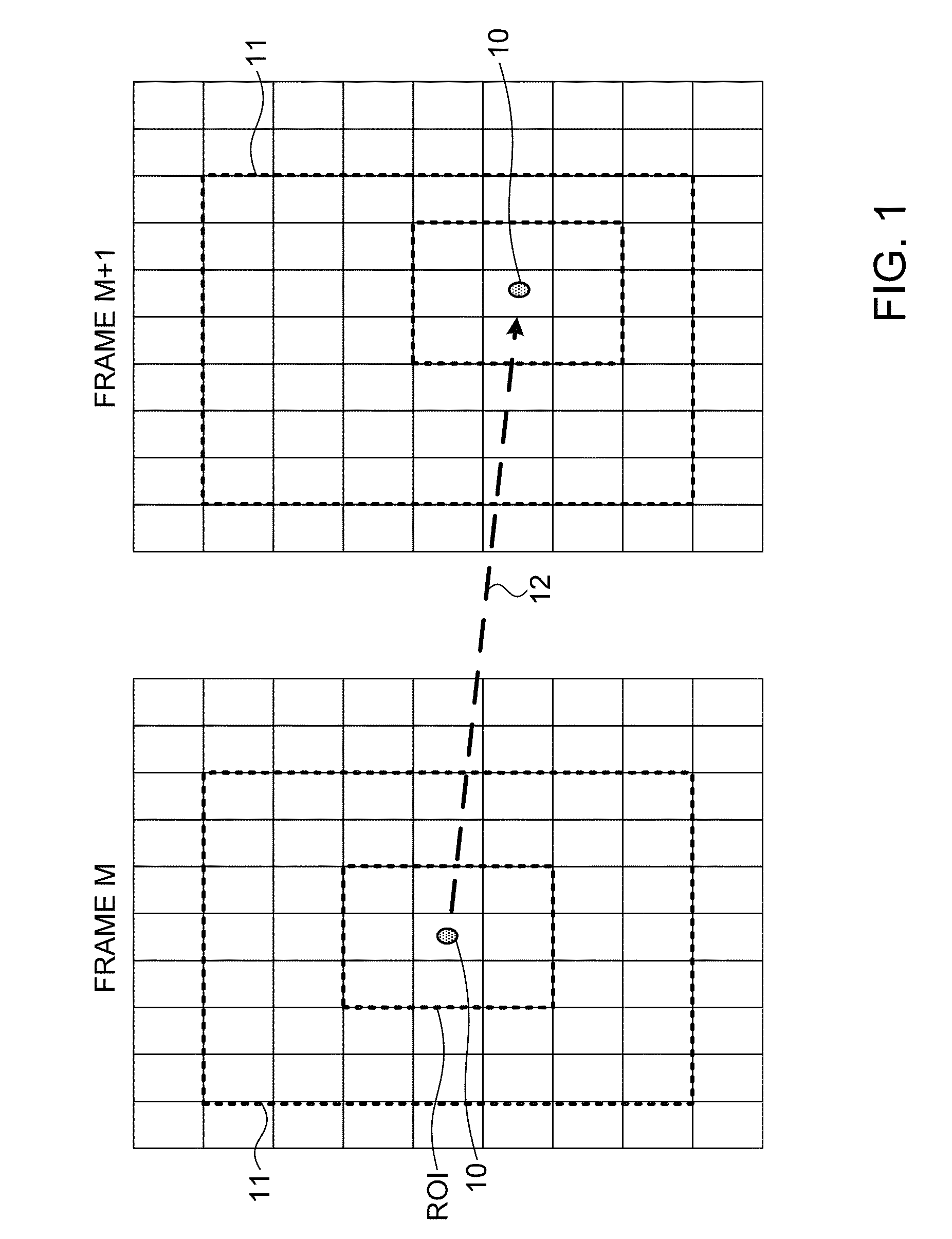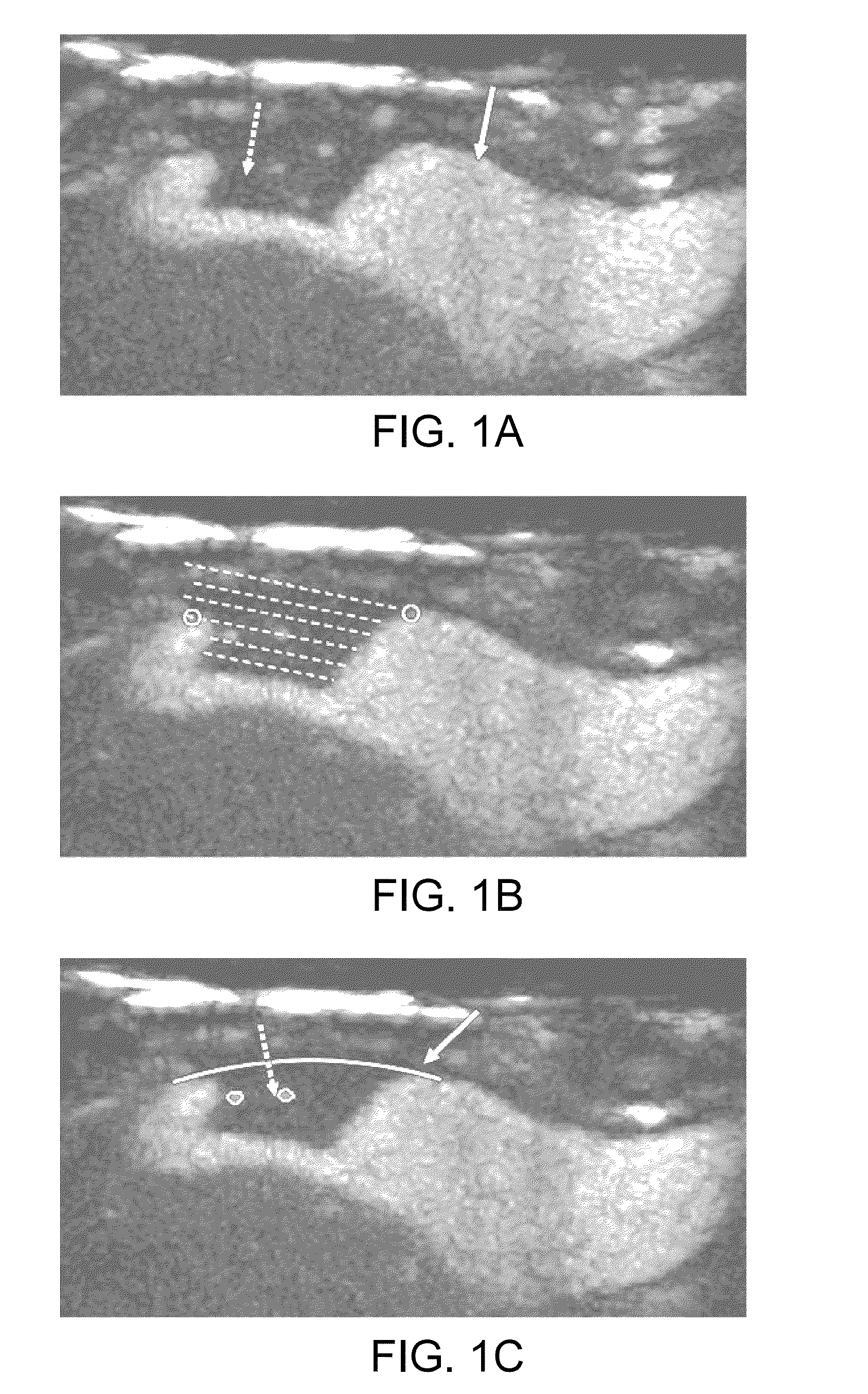Quantitative assessment of neovascularization
a neovascularization and quantitative technology, applied in the field of quantitative assessment of neovascularization in plaques, can solve the problems of spatial resolution, imaging tools such as ct, mri and pet-spect, cannot reasonably resolve such small diameters, etc., and achieve more reproducible results, improve accuracy, and enhance probability
- Summary
- Abstract
- Description
- Claims
- Application Information
AI Technical Summary
Benefits of technology
Problems solved by technology
Method used
Image
Examples
Embodiment Construction
[0040]Exemplary systems and methods for quantification of neovascularization, as described in the present disclosure, involve the acquisition of contrast enhanced ultrasound (CEUS) images in the region where the neovascularization is to be calculated. Ultrasound examination of the carotid bifurcation and internal carotid artery is used as an exemplary application of the methods of this disclosure. Typically, a routine ultrasound grayscale image procedure is performed to assess the position, size and shape of the plaque (if neovascularization in a plaque is being measured), followed by color and spectral Doppler imaging to confirm the degree of stenosis. This can be performed, for instance, on an iU22 ultrasound system, available from Philips Healthcare of Bothwell, Wash., with a 4-8 MHz broad band linear array transducer. Thereafter the activated contrast agent, such as Definity™ as supplied by Bristol-Myers Squibb Medical Imaging Corp., of North Billerica, Mass., diluted in saline,...
PUM
 Login to View More
Login to View More Abstract
Description
Claims
Application Information
 Login to View More
Login to View More - R&D
- Intellectual Property
- Life Sciences
- Materials
- Tech Scout
- Unparalleled Data Quality
- Higher Quality Content
- 60% Fewer Hallucinations
Browse by: Latest US Patents, China's latest patents, Technical Efficacy Thesaurus, Application Domain, Technology Topic, Popular Technical Reports.
© 2025 PatSnap. All rights reserved.Legal|Privacy policy|Modern Slavery Act Transparency Statement|Sitemap|About US| Contact US: help@patsnap.com



